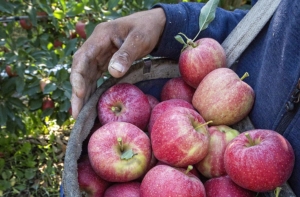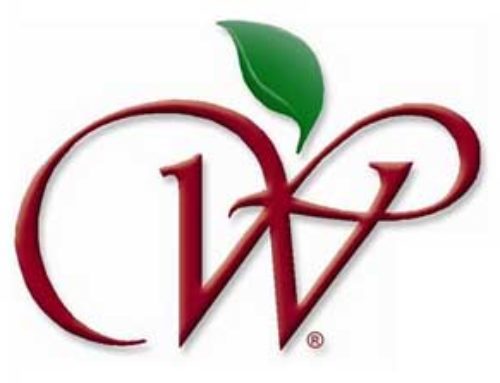—by Matt Milkovich

Editor’s note: This story was updated Aug. 16 to include the U.S. Apple Association’s final estimate for the 2024–25 crop, announced on the final day of the Outlook 2024 conference. A second update on Aug. 20 provided additional details about the Washington state fresh-market estimate.
Day 1 of the U.S. Apple Association’s Outlook 2024 conference concluded with an initial estimate of U.S. production for the 2024–25 crop: about 282 million 42-pound bushels, down about 2 percent from last year but 5 percent greater than the five-year average. “Still a big year,” said Chris Gerlach, USApple’s vice president of insights and analytics.
The 2024–25 crop will have a farm-gate value of more than $3.3 billion, generated primarily from fresh production, Gerlach said during the conference, held Aug. 15–16 in Chicago.
First estimate
The first estimate is based on data from the U.S. Department of Agriculture and USApple. USApple members further refine the numbers during regional meetings, and a final estimate is announced at the end of the conference.
At the state level, Washington will remain the nation’s top producer with an estimated crop of about 179 million bushels, a 1 percent decrease from 2023–24. Earlier in the month, the Washington State Tree Fruit Association estimated a fresh-market Washington crop of 124 million 40-pound boxes, whereas USApple estimates the total size of the fresh and processing crops in 42-pound bushels.
According to USApple, New York is projected to reclaim the number two spot with around 31 million bushels, a 4 percent increase from last season. Michigan, coming off two consecutive record years, is expected to decrease production by 10 percent with about 29 million bushels. Pennsylvania will produce 12.1 million bushels, down 7.8 percent from last year. California will produce about 5.5 million bushels, down 4.2 percent. Virginia will produce 5.2 million bushels, up 4.3 percent. Rounding out the top seven apple states, Oregon will produce 3.6 million bushels, down 5.4 percent from last year.
Gala is expected to remain the top U.S. variety, with more than 48 million bushels produced and accounting for about 17 percent of the U.S. apple market. Rounding out the top five will be Red Delicious (35 million bushels), Granny Smith (28 million), Honeycrisp (28 million) and Fuji (27 million).
As for global supply, China will continue to dominate the world market, producing an estimated 2.1 billion bushels in 2024–25, a 2 percent increase compared to 2023–24. European production is expected to shrink by 11 percent to about 545 million bushels. South America is expected to decline by 15 percent compared to last year, producing about 116 million bushels. Mexico is predicted to produce 43 million bushels, up 1 percent from 2023–24. Canada is expected to increase production by 7 percent to almost 21 million bushels, Gerlach said.
Final estimate
The U.S. Apple Association made its final prediction of the size of the 2024–25 U.S. apple crop: 260 million 42-pound bushels, a 10.1 percent decrease compared to last year’s production.
That’s quite a bit lower than the initial estimate made during the first day of USApple’s Outlook conference. After the initial prediction, based mainly on USDA estimates, was given, USApple members met to discuss current growing conditions and formulate a more up-to-date estimate. The final USApple forecast is an adjustment of the USDA numbers based on those conversations, according to Gerlach of USApple.
Washington state is mainly responsible for the smaller national estimate. USApple lowered Washington’s estimate to 155 million bushels. Rounding out the remaining top production states: The final estimate for New York is 31 million bushels, Michigan 30.5 million bushels, Pennsylvania 11.5 million, California 5.5 million, Virginia 4.8 million and Oregon 3.6 million. •







Leave A Comment